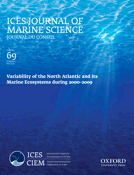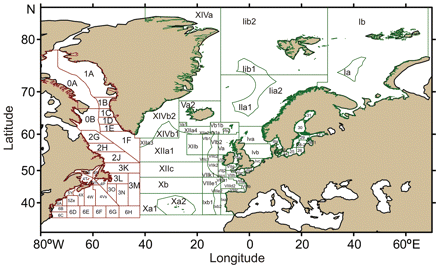-
PDF
- Split View
-
Views
-
Cite
Cite
Peter H. Wiebe, Bert Rudels, Steven X. Cadrin, Ken F. Drinkwater, Alicia Lavin, Introduction to variability of the North Atlantic and its marine ecosystems, 2000–2009, the proceedings of an ICES/NAFO symposium held in Santander, Spain, 10–12 May 2011, ICES Journal of Marine Science, Volume 69, Issue 5, July 2012, Pages 697–702, https://doi.org/10.1093/icesjms/fss090
Close - Share Icon Share
Abstract
An international symposium on decadal changes in the International Council for the Exploration of the Sea (ICES) and North Atlantic Fisheries Organization (NAFO) regions of the North Atlantic from 2001 to 2009, jointly sponsored by ICES and NAFO, took place in Santander, Spain, from 10 to 12 May 2011. During the period covered by the symposium, the upper ocean warmed, particularly in temperate and Arctic–boreal regions, and there were major biogeographic shifts and changes in the phenology of the biota that appear to be related to the physical changes.Wiebe, P. H., Rudels, B., Cadrin, S. X., Drinkwater, K. F., and Lavin, A. 2012. Introduction to Variability of the North Atlantic and its marine ecosystems, 2000–2009, the proceedings of an ICES/NAFO symposium held in Santander, Spain, 10–12 May 2011. – ICES Journal of Marine Science, 69: 697–702.
Background to the symposium
Investigating variability in marine ecosystems is increasingly important for understanding ecosystem processes, particularly during a time of rapid climate change. Natural patterns or “modes” of the atmosphere and ocean, such as the Arctic Oscillation, the North Atlantic Oscillation (NAO), the Atlantic Multidecadal Oscillation (AMO), the El Niño/Southern Oscillation, and the Pacific Decadal Oscillation, and their changes, orchestrate large variations in weather and climate over much of the globe on interannual and longer time-scales (Hurrell and van Loon, 1997; Joyce, 2001; Visbeck et al., 2001; Trenberth et al., 2002; Kerr, 2005). The interaction of climatic forcing, ocean circulation, and changes in the concentrations of greenhouse gases influence the dynamics of the thermohaline circulation of the North Atlantic, a factor identified as a key influence on global climate (Broecker, 1997; Clark et al., 2002; Sutton and Hodson, 2005) and ecosystem dynamics (Reid et al., 2009; Reid and Valdés, 2011). Climate-induced changes in advection and stratification affect basin-scale circulation and transport, and vertical processes important to ecosystem and population dynamics. Such changes in the physical environment in the North Atlantic basin have been linked to fluctuations in the population dynamics and productivity of key species and exploited fish stocks in the basin itself, as well as over the associated shelves (Reid et al., 2001, 2009; Beaugrand et al., 2003; Greene et al., 2003; Richardson and Schoeman, 2004; Beaugrand, 2005; Pedchenko, 2005). Changes in population dynamics are themselves influenced by climate-driven changes in circulation patterns and physiological rates, as well as by the timing of spring blooms (Reid et al., 2001; Reid and Valdés, 2011).
Insights into the changes taking place in the North Atlantic are due in large part to the establishment decades ago of two international governmental organizations, the International Council for the Exploration of the Sea (ICES) and the International Commission for the Northwest Atlantic Fisheries (ICNAF, subsequently renamed the North Atlantic Fisheries Organization, NAFO). Both organizations have promoted basic marine research and fisheries oceanography in the North Atlantic throughout the 20th and now into the 21st century, as well as providing advice for the management of fisheries in ICES and NAFO areas (Figure 1). The fact that we know so much about the changes that have transpired over the past century in ICES/NAFO areas is due in part to the national efforts and international cooperation that supported the development and maintenance of long oceanographic and fish time-series, some now more than 100 years long. Equally important has been the sophisticated processes that were established to report and review the environmental status and change. Annual volumes (of Annales Biologiques) were published by ICES between 1943 and 1986. These were replaced by ICES decadal symposia in 1991 and 2001 (Dickson et al., 1992; Turrell et al., 2003), following a tradition of decadal symposia started by ICNAF in 1964 (ICNAF, 1965) and continued through to the early 2000s. Mälkki (2012) reviews the past half-century of decadal symposia from a personal perspective in this issue. In the past decade, comprehensive Cooperative Research Reports of the status of hydrography, zooplankton, and climate change in the North Atlantic that cover both ICES and NAFO areas have also been published (Hughes et al., 2011; O'Brien et al., 2011; Reid and Valdés, 2011).
The ICES (green) and NAFO (red) statistical areas used for gathering and reporting environmental and fisheries data.
This issue contains selected papers from the international symposium on decadal changes in the ICES and NAFO regions in the North Atlantic from 2001 to 2009, jointly sponsored by ICES and NAFO and held in Santander, Spain, from 10 to 12 May 2011 (Figure 1). During this period, the upper ocean has warmed, particularly in temperate and Arctic–boreal regions, and there have been major biogeographic shifts and changes in the phenology of the biota that appear related to the physical changes. The symposium science programme provided interdisciplinary observations of the variability in North Atlantic climate and ocean physics and of all trophic levels from plankton to fish stocks, marine mammals, and seabirds. There were 46 oral presentations, of which 5 were keynote addresses, and 79 were posters. This issue contains a selection of the contributions presented.
Some highlights
The general trend of increasing temperature and salinity within the North Atlantic was evident in the physical oceanography presentations made during the symposium, with focus on the variability, contraction, and expansion of the Subpolar Gyre (SPG), and on the AMO. Although patterns of oceanic variability were strongly associated with the NAO index during its negative phase in the 1960s and its positive phase during the 1980s and early 1990s, the index was relatively weak and not a good indicator of atmospheric conditions during the years 2000–2009.
Time-series of 50–70 years were used to characterize the changes taking place from the Rockall Trough to the Norwegian coast. A relation between temperature and NAO could be found up to 1990, but not thereafter. The heat content in the Norwegian Sea increased to a maximum in 2003/2004, but thereafter decreased slightly. Its variation is mainly attributable to advection, not to local heating. In the Barents Sea, the mean temperature observed in 2006 was the highest during the 110-year period. During the past 15 years, Atlantic Water in the West Spitsbergen Current has shown an increasing trend in temperature and salinity. Again, 2006 stood out as an exceptional year, with the warm Atlantic Water extending far into the Arctic Ocean and affecting the ocean climate north of Svalbard. The deep and intermediate Greenland Sea waters have been warming and becoming more saline as a result of inflow of Arctic Ocean deep waters via the East Greenland Current and because of the increasing temperatures of the recirculating Atlantic water.
Trends in the sea level observed at three stations off northwestern Spain revealed a rise of ∼2.5 cm over a 67-year period and are a possible integrated measure of a general temperature increase in the North Atlantic.
The trends over five decades in abundance/biomass of three trophic groupings (phytoplankton, herbivorous copepods, and carnivorous zooplankton) from continuous plankton recorder samples from nine Northeast Atlantic ecoregions revealed region-specific differences in the fluctuations within trophic groupings. The most significant changes were in the most recent decade (2000–2009). The Porcupine Abyssal Plain Sustained Observatory (PAP–SO) in the Northeast Atlantic produced a 20-year high-resolution record integrating environmental and ecologically relevant variables from the surface to the seafloor. The time-series revealed that variations in POC flux quantity and/or quality arriving on the seafloor form an intimate link between the benthic ecosystems and geochemistry and ocean surface processes. Stable isotopes in Atlantic salmon (Salmo salar) returning to the River Frome (UK) vary with the SPG modal variability, indicating that these fish feed in a broad area around the Iceland Basin. In contrast, the isotopic composition of salmon from the northeast coast of the UK shows no influence of the SPG, and presumably they feed in the Norwegian Sea. The subdecadal variability in carbon isotope values likely reflects changes in the relative proportion of production by small (picoplankton) compared with large (diatom) cells in phytoplankton communities.
A time-series of climate, fishing pressure, plankton, pelagic fish, and demersal fish four decades long (1970–2009) from the Barents Sea revealed that fishing pressure and climatic conditions have varied greatly, giving rise to cyclic variations in top–down and bottom–up control of this ecosystem. Increasing abundances of krill and shrimp and large stocks of demersal and pelagic fish have been documented in the past warmest decade on record. Distinct Atlantic and Arctic oceanographic domains on the West Spitsbergen Shelf result in differing proportions of the warm-water Calanus finmarchicus and cold-water C. glacialis, which varied with the NAO with time-lags of 4–7 years. The diet of little auk (Alle alle) chicks was more energy-rich when C. glacialis stage 5 in the Arctic community was more easily available to the birds.
Several papers in this issue link large-scale patterns and ecosystem variability to the productivity of fish stocks and fish resources. During a relatively warm period around Iceland, the spatial distribution of many fish stocks extended farther north, and similar warming of the Barents Sea influenced the production of cod (Gadus morhua), haddock (Melanogrammus aeglefinus), herring (Clupea harengus), and capelin (Mallotus villosus). Fish recruitment was linked to ecosystem patterns, including the recruitment failure of several gadoid fish in the Skagerrak Sea associated with changes in the plankton community, and Iberian sardine (Sardina pilchardus) recruitment was linked to global, regional, and local environmental variables. There were indeed abrupt shifts in the productivity of many fish species in the Northwest Atlantic in the 1980s, but no such changes in the most recent decade.
Honoured guests
As with the previous decadal symposia, the symposium honoured scientists with long affiliation with ICES and NAFO, who have now retired but who contributed to the maintenance and interpretation of time-series over many years. 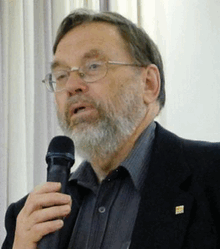 Allyn Clarke
Allyn Clarke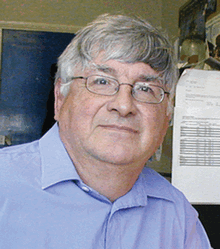 Bob Dickson
Bob Dickson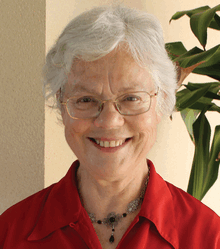 Catherine Maillard
Catherine Maillard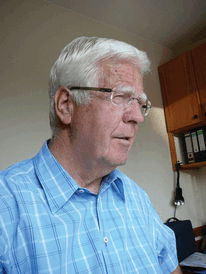 Jens Meincke
Jens Meincke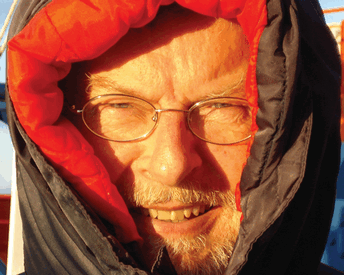 Manfred Stein
Manfred Stein Tom Rossby
Tom Rossby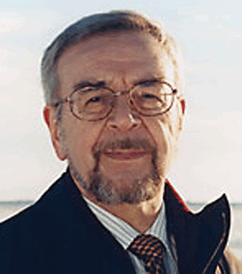 Pentti Mälkki
Pentti Mälkki
Allyn Clarke
Dr Allyn Clarke received his PhD from the University of British Columbia in Vancouver, Canada. Upon the completion of his degree, he was hired by the Bedford Institute of Oceanography (BIO) in Dartmouth, Nova Scotia, where he joined the Ocean Circulation Section. Al quickly made significant contributions to the understanding of the physical oceanography of the North Atlantic, including its circulation patterns, water-mass transformations, and environmental variability. During that time too, he was active in ICES' Hydrographic Working Group and later played lead roles in international climate programmes, such as the WOCE (World Ocean Circulation Experiment) and CLIVAR (Climate Variability and Prediction). His primary scientific interest, though, was in the high-latitude North Atlantic and its role in the global climate system. During his 35 years of distinguished service, he led numerous research cruises throughout the northern North Atlantic, including memorable winter visits to the Labrador and Greenland Seas in search of deep convection. His research papers include not only the observational results from those field studies, but also theoretical considerations. Later in his career, he became a science manager, first as head of the Ocean Circulation Section and then as head of the Atlantic Oceanographic Laboratory at BIO.
Although his contributions to oceanography have been many, he is particularly honoured for his role in establishing WOCE line AR7W across the Labrador Sea, which has continued as a contribution to the CLIVAR component of the World Climate Research Programme (WCRP). The line stretches from the Labrador Shelf, across the Labrador Basin, to the West Greenland Shelf. It was started in 1990 with physical oceanographic measurements, and biological sampling was added in 1994. It has been run annually since 1990 and forms the northernmost section in Canada's Atlantic Zonal Monitoring Programme, and it represents the only long-term monitoring section covering the full width of the Labrador Sea. The data have contributed to a greater understanding of the hydrographic and current variability in the Labrador Sea, their influence on the North Atlantic circulation, and the role of the physical oceanography on the biology. As a scientist and science manager, he provided scientific leadership in ocean and related climate research at local, national, and international levels, earning the respect of his colleagues for his scientific productivity, strong leadership, and timely and scientifically sound advice.
Bob Dickson
Dr Robert (Bob) Royds Dickson has had a long and distinguished career marked by unlimited energy and high productivity. Bob joined the Lowestoft Fisheries Laboratory (now Cefas) in 1964 and completed his PhD at the University of East Anglia in 1967. From the start of his career, he contributed to the available stock of direct current measurements to understand better the sense and variability of the deep ocean circulation. One example has been his continuous effort to obtain direct long-term measurements of the cold, dense Denmark Strait Overflow, which won him the honour of the Albatross Laureate of the American Miscellaneous Society in 1998 for attempting to stem the flow through the Denmark Strait with a weir of current metres. He also studied the processes that drive variations in the hydrography and surface circulation patterns of the North Atlantic, including responses to shifts in the NAO and his work on the Great Salinity Anomaly. More recently, he has chaired, cajoled, coordinated, and contributed to the Arctic–Subarctic Ocean Flux Study (ASOF), a major international research effort aimed at understanding the role of the high latitude ocean in global change. Bob has had a long-term interest in the effects of physical oceanography on marine ecology: he teamed up with leading biologists such as his Cefas colleague David Cushing to investigate the role of ocean circulation and climate at interannual to decadal time-scales on Atlantic ecosystems from plankton to commercial fish stocks.
Bob has played a major role in ICES as a member, often chair, of working groups and committees, workshops, and theme sessions. Of special note is that he helped organize the ICES decadal symposium for the 1980s and led the one for the 1990s held in Edinburgh. It was Bob's idea to honour those scientists that maintained and analysed long time-series. His career-long contribution to science led to appointment as CBE in the Queen's New Year Honours List of January 2007, just one of many awards and honours he has won over the years. Away from science, he writes children's books and plays and has a passion for antiquarian books, mostly 17th century, maintaining a collection of the early folios of Ben Jonson that is in some ways is unique—rather like Bob himself.
Catherine Maillard
Dr Catherine Maillard began work under the direction of the two notable pioneers in French oceanography, Henri Lacombe and Paul Tchernia. She took part in the MEDOC (Mediterranean Ocean Convection) cruises in the Gulf of Lion in the Mediterranean during winter 1969, at which time she shared the cruises with Michèle Fieux, the first female oceanographer on board French research vessels. In 1972, she presented her PhD thesis on deep-water formation in the Red Sea and began a distinguished career in physical oceanography. During the international GATE (GARP Atlantic Tropical Experiment) programme of 1974, she was chief scientist on a cruise to the Mid-Atlantic, and during 1975/1976, she spent time on board BOHRA2, the buoy moored off Marseille in the Gulf of Lion. After a stay at the Woods Hole Oceanographic Institution (WHOI) working alongside Phil Richardson, she returned to France to join the Centre National pour l'Exploitation des Oceans (CNEXO) in 1976, and later the oceanography laboratory in Brest led by François Madelain. Continuing the work initiated at WHOI, she published the Atlas of the North Atlantic in 1986. Catherine then moved briefly to IFM (Institut für Meereswissenschaften) in Kiel before taking part in studies in North Atlantic deep-water circulation and of meddies in 1991. She also organized two MEROU (Mer Rouge) cruises to the Red Sea (1982) and took part in Confluence cruises to the South Atlantic, as well as directing staff training for two Indonesian research vessels.
She is honoured here, however, primarily for her work on oceanographic databases. In the 1980s, she took over the responsibility of rebuilding the French oceanographic data centre (SISMER) and built up a network of joint cooperation in the scientific community, which greatly enhanced the international image of SISMER. She carried out several European projects such as Medar (Mediterranean Data Archaeology and Rescue)/Medatlas and more recently Seadatanet. These projects helped to create a close working relationship between European data centres and scientific users for data sharing and normalization. The success of the International Marine Data and Information Systems (IMDIS) conferences initiated in Brest in 2005 demonstrated the importance of data exchange. Catherine has been a driving force in oceanographic data management, always trying to involve the data-management community in all countries, whatever their political leaning, as well as sharing her knowledge and skills in the field of data management. From data collection to data management through ocean research experience, Catherine has demonstrated that the three communities can work in a close and friendly relationship, to the benefit of all.
Jens Meincke
As a classical seagoing blue-ocean oceanographer, Dr Jens Meincke made the North Atlantic his major working area, especially the Nordic Seas (Greenland Sea, Norwegian Sea, and Iceland Sea) and the Arctic Ocean. The themes of his research ranged from water-mass characteristics and water-mass (trans)formations and convection to large-scale ocean circulation, concentrating on the overflows and the thermohaline circulation and the coupling between ocean and climate. Jens participated and often took a leading role in planning and executing larger international research projects, starting with the ICES Overflow-73 study of the exchanges across the Greenland–Scotland Ridge, and continuing with the Greenland Sea Project (GSP) and the Fram Strait Project (FSP) in the 1980s. Jens was coordinator for the EU project VEINS (Variability of Exchanges in the Northern Seas) from 1997 to 2000 and the ASOF-W (Arctic-Subarctic Ocean Flux-West study) of 2003–2005. He also took part in the WCRP projects WOCE and CLIVAR, within which he and the University of Hamburg contributed to the maintenance of the eastern part of the A01 line, the hydrographic section between Greenland and Ireland. During those studies, he and others at the University of Hamburg conducted several cruises to the North Atlantic and the Nordic Seas, from which he contributed numerous publications on water masses, their formation and associated circulation patterns, and their relation to climate. Jens was prominent within ICES, as a member and also chair of the Working Group of Ocean Hydrography, and vice-president of ICES from 1990 to 1993. Nationally, Jens moved from Kiel 1983 to occupy the newly established chair in regional oceanography at the University of Hamburg. He made Hamburg a home also for seagoing oceanography, and chaired the SFB-318 project “Klimarelevante Prozesse im System Ozean-Atmosphäre” and was vice-chair for the SFB 512 project “Tiefdruckgebiete und das Klimasystem des Nordatlantiks”. Jens had a natural authority and calm. His office door was always open for the discussion of oceanography and research issues; he was an inspiration to many.
Manfred Stein
Dr Manfred Stein joined the Institut für Seefischerei (the Institute for Sea Fisheries) in Hamburg shortly after graduating with his PhD in physical oceanography from the University of Hamburg. He soon became involved with the physical oceanographic monitoring activities of the Institute, most notably off West Greenland. For more than 30 years, he participated in cruises, several as cruise leader. Many of the cruises also sampled the northeastern Atlantic and the waters of East Greenland while en route to West Greenland. As lead scientist too, he was responsible for the physical oceanographic component of the monitoring operations for most of those years. He not only collected the data, but reported the results on an annual basis to NAFO and wrote numerous research papers based on the results from those cruises. Although his main interest was in the physical oceanography, he was also concerned with its role on the fish stocks off West Greenland, especially Atlantic cod, and published several papers examining the impact of the hydrography on the recruitment, distribution, and growth of that species.
Manfred is honoured for his career commitment to the long-term monitoring of West Greenland waters, but he achieved far more. He was a regular participant at ICNAF/NAFO meetings, initially as a scientist, but later as chair of the Environmental Subcommittee that was responsible for examining the links between environmental variability and changes in fish stocks in the Northwest Atlantic, a post he maintained for >20 years. As chair, he oversaw the reporting and publication of annual reviews of the climate and oceanographic conditions in NAFO waters, and he was involved too with NAFO's Publication Committee for several years, including some as its chair. He worked tirelessly to expand the hydrographic database off West Greenland and in the Labrador Sea through cooperative research and data exchanges with Russian colleagues. Although now retired, Manfred maintains keen interest in Greenland, evidenced by his recently spending several months in Nuuk, to experience life there during late winter and early spring.
Tom Rossby
Dr Thomas Rossby earned his engineering degree in applied physics at the Royal Institute of Technology in Stockholm, Sweden, and a PhD in oceanography at the Massachusetts Institute of Technology. A long-time professor at the University of Rhode Island, Tom's work in oceanography is consummately modern, yet with a flavour of the old days. Inventiveness and durability are distinct virtues that he has demonstrated amply. The first Swallow floats paved the way for using acoustics in oceanography. With inspiration from Henry Stommel, Tom and Douglas Webb created the SOFAR float, freely drifting far below the surface and signalling its location through the SOFAR channel. A risky yet successful deployment of a flotilla of these in the MidOcean Dynamics Experiment (1973) gave us the first, animated, view of the chaotic circulation of the deep ocean. The floats showed that Rossby-like wave propagation governs the movement of the dominant eddies of the ocean, today visible globally and synoptically with satellite altimetry.
Tom's SOFAR float and autonomous vertical profilers led the way to today's Argo floats, of which there are now some 3000 deployed throughout the world ocean; after just a few years, they are yielding a cascade of results about circulation, climate variability, and increasingly about ocean biology and chemistry. Tom continues to deploy deep RAFOS floats, tracing boundary currents and eddies in the Norwegian Sea, in the subpolar Atlantic and the warm branch of the global overturning circulation. However, he has taken his efforts much farther, developing bottom-mounted acoustic echosounders, bottom-following drifters, and instrumenting merchant ships with acoustic Doppler current profilers. His repeat sections of the Gulf Stream carried out on the New York–Bermuda passages of the “Oleander” have continued since 1992, and they provide one of the most unique time–space series of deep-penetrating vector currents in oceanography. Such classic long time-series especially in the deep ocean are few, and thanks are due to Tom for both his innovative instrument development and his constant enthusiasm to obtain more and better physical oceanographic data, as well as for his generosity in teaching and sharing these with so many others around him.
Pentti Mälkki
Dr Pentti Mälkki spent many years as a hydrologist with the Finnish Hydrological Office and as a physical oceanographer with the Finnish Institute of Marine Research (FIMR). He joined FIMR in 1968, and by 1973 was head of its Physics Department. Pentti's early work focused on the hydrology, hydrography, and circulation patterns of the Baltic Sea. Later, while maintaining his interest and work in the Baltic, he became involved in physical oceanographic studies in the Northeast Atlantic, especially Denmark Strait, the Greenland Sea, and the Subarctic seas, where he led several expeditions. During this time, he was also a long-term member of the ICES Working Group on Oceanic Hydrography. When the decision was taken by ICES to create decadal symposia to review environmental conditions as a means of replacing Annales Biologique, it was Pentti who took on the task of organizing the first one on the decade of the 1980s, which was held in June 1991 in Mariehamn the capital of Åland, which is administered by Finland. It was at that meeting too that the first honourees were selected for their efforts at assembling and protecting long time-series and fostering the idea that changes in the ecology were linked to variability in the physical environment.
Like the other honourees here, Pentti has had a long and distinguished career and has accomplished much more than that for which he is being honoured. In 1990, he became the Director-General of FIMR, a position he held until 2005 when he retired from the Finnish government service. He has also been industrious in the international oceanographic arena, holding positions in the Intergovernmental Oceanographic Commission (IOC), the Nordic Council for Physical Oceanography, the Arctic Ocean Sciences Board (AOSB), and the Executive Committee on the Protection of the Gulf of Bothnia. Perhaps most visibly of all, though, he has been deeply involved in ICES, where, besides his work in the Hydrographic Working Group, he was a long-term Finnish Delegate, Vice-President from 1997 to 2000, and President from 2000 to 2003. Indeed, it was during his presidency that the successful 100th anniversary celebrations of ICES were held. Pentti has also taken a great interest in the history of oceanographic research and has written a number of articles in that field. He has also written the history of the decadal symposia, which began within ICNAF and is now carried on by ICES and the NAFO. His article is included in this special issue.
References
Author notes
Handling editor: Bill Turrell


